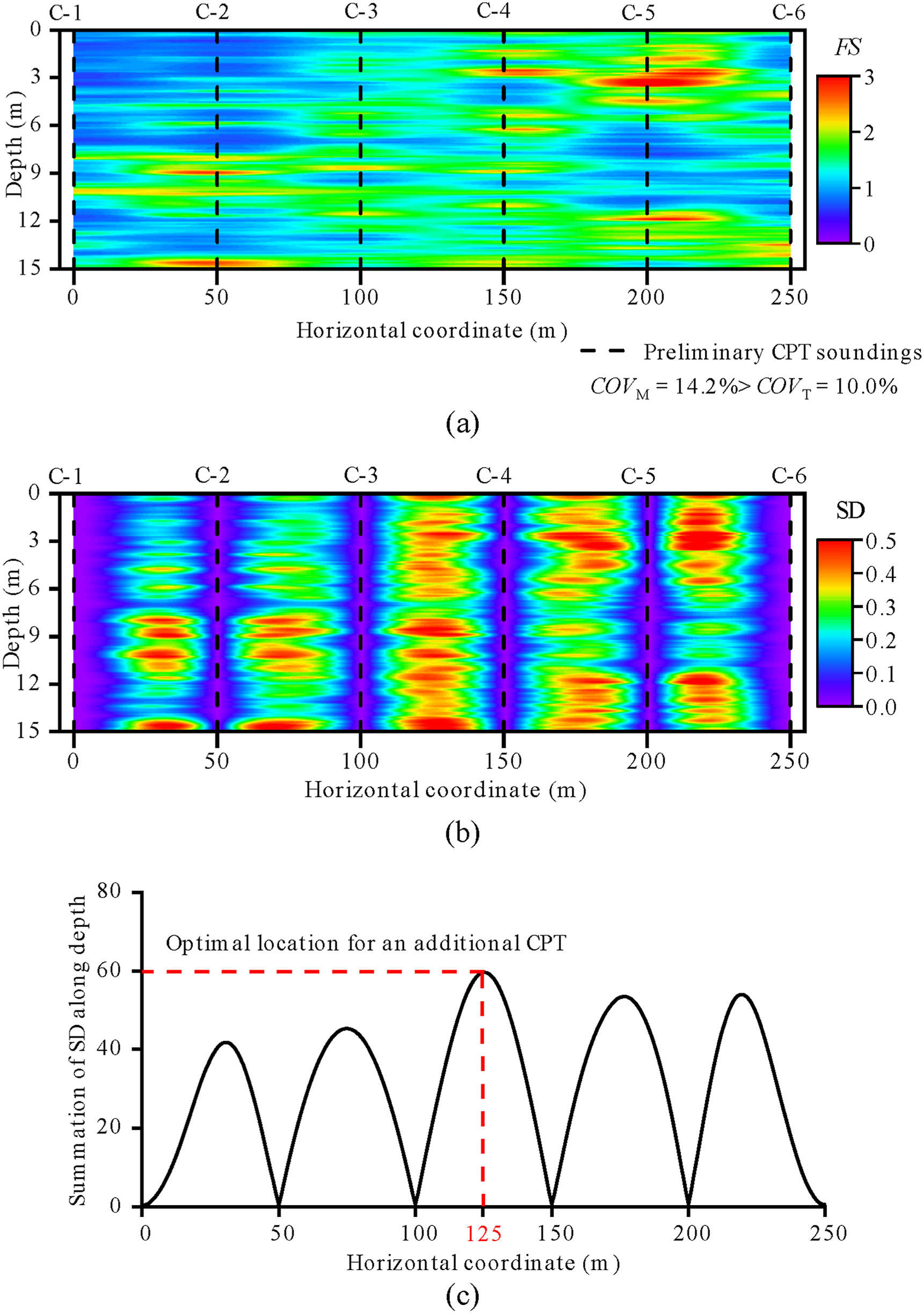JRMGE / Vol 14 / Issue 4
Adaptive sampling strategy for characterizing spatial distribution of soil liquefaction potential using cone penetration test
Zheng Guan, Yu Wang, Tengyuan Zhao
Show More
a Department of Architecture and Civil Engineering, City University of Hong Kong, Tat Chee Avenue, Kowloon, Hong Kong, China
b School of Human Settlements and Civil Engineering, Xi’an Jiaotong University, Xi’an, 710049, China
2022, 14(4): 1221-1231. doi:10.1016/j.jrmge.2022.01.011
Received: 2021-11-13 / Revised: 2021-12-31 / Accepted: 2022-01-20 / Available online: 2022-03-18
2022, 14(4): 1221-1231.
doi:10.1016/j.jrmge.2022.01.011
Received: 2021-11-13
Revised: 2021-12-31
Accepted: 2022-01-20
Available online: 2022-03-18
Characterizing spatial distribution of soil liquefaction potential is critical for assessing liquefaction-related hazards (e.g. building damages caused by liquefaction-induced differential settlement). However, in engineering practice, soil liquefaction potential is usually measured at limited locations in a specific site using in situ tests, e.g. cone penetration tests (CPTs), due to the restrictions of time, cost and access to subsurface space. In these cases, liquefaction potential of soil at untested locations requires to be interpreted from limited measured data points using proper interpolation method, leading to remarkable statistical uncertainty in liquefaction assessment. This underlines an important question of how to optimize the locations of CPT soundings and determine the minimum number of CPTs for achieving a target reliability level of liquefaction assessment. To tackle this issue, this study proposes a smart sampling strategy for determining the minimum number of CPTs and their optimal locations in a self-adaptive and data-driven manner. The proposed sampling strategy leverages on information entropy and Bayesian compressive sampling (BCS). Both simulated and real CPT data are used to demonstrate the proposed method. Illustrative examples indicate that the proposed method can adaptively and sequentially select the required number and optimal locations of CPTs.
Keywords: Liquefaction potential, Information entropy, Cone penetration test (CPT), Site characterization, Compressive sampling
Article Data
Author(s) Information
Zheng Guan

Dr. Zheng Guan obtained his PhD at City University of Hong Kong (CityU) in 2021, and received Ringo Yu Prize for Best PhD Thesis in Geotechnical Studies (2021). He is currently a postdoc at City University of Hong Kong with an interest in sampling and analytics of geo-data, machine learning-based geotechnical site characterization, high-resolution 3D geological modelling and performance-based geotechnical and seismic design. Dr. Guan is a registered geotechnical engineer as well as structure engineer with more than 5 years of engineering experience in geotechnical site characterization, geotechnical design and geologic hazard mitigation. He has published around ten technical papers in top international journals.

